What is the locus of orange points for which the purple lines are parallel? The fixed cevians of the triangle BCD are angle bisectors.
Hidden circle II
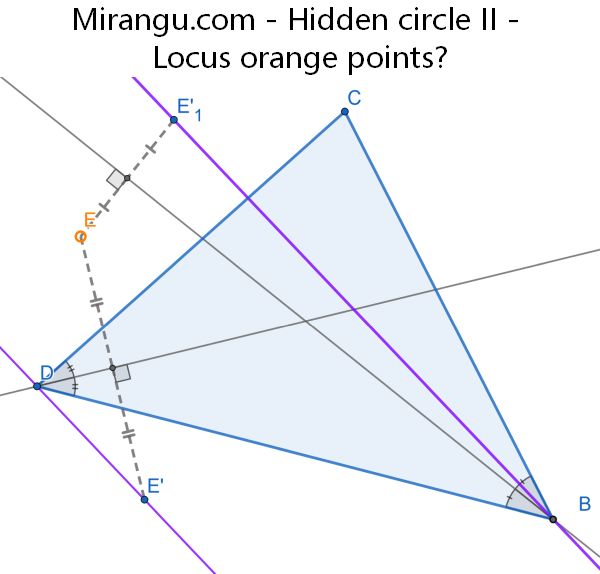

What is the locus of orange points for which the purple lines are parallel? The fixed cevians of the triangle BCD are angle bisectors.
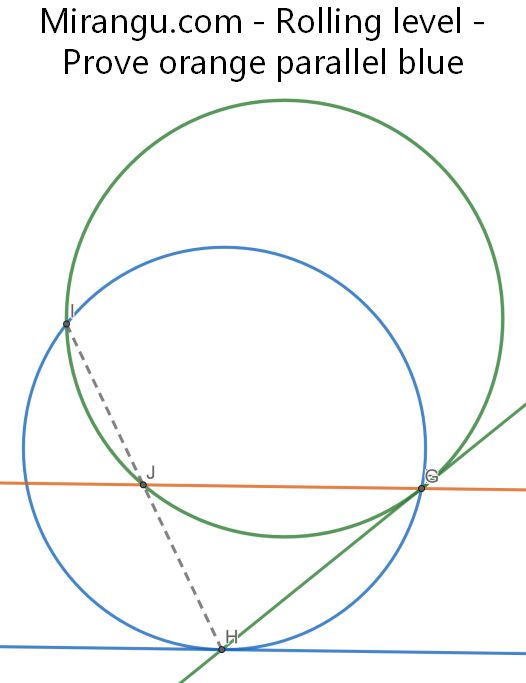
Blue and green circles with tangents. The green tangent line goes through the blue tangent point and the points IJH are collinear. Show that the blue and orange lines are parallel.
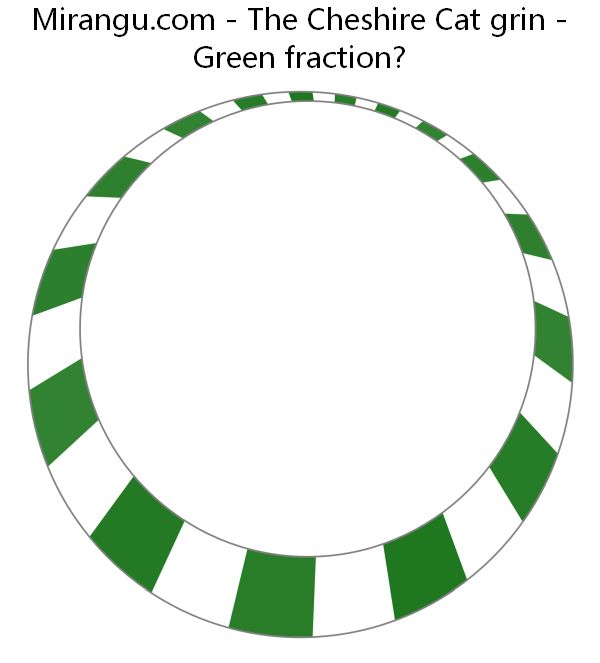
What is the total area of the green teeth relative to the large circle area? (Assume the inner circle radius is 80% of the outer. The 32 lines forming the tooth sides are concurrent, and spaced at equal angles apart.)
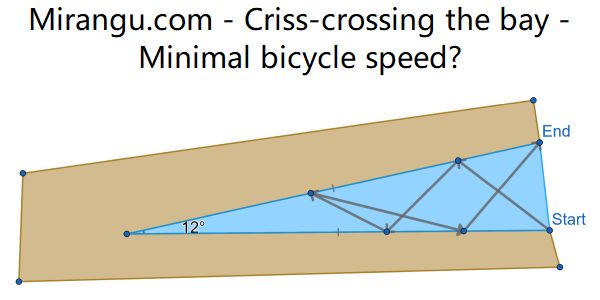
A boatsman races to cross Isosceles Bay five times, finishing at End. A bicyclist pedals around the bay. How many times faster must the bicyclist travel in order to be sure to beat the boat to End?
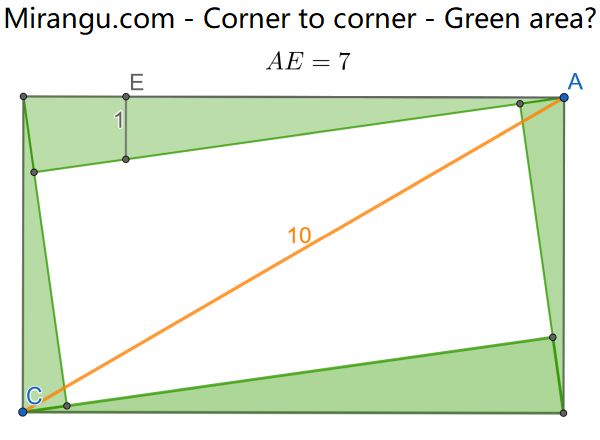
A rectangle inside a rectangle. What is the green area?
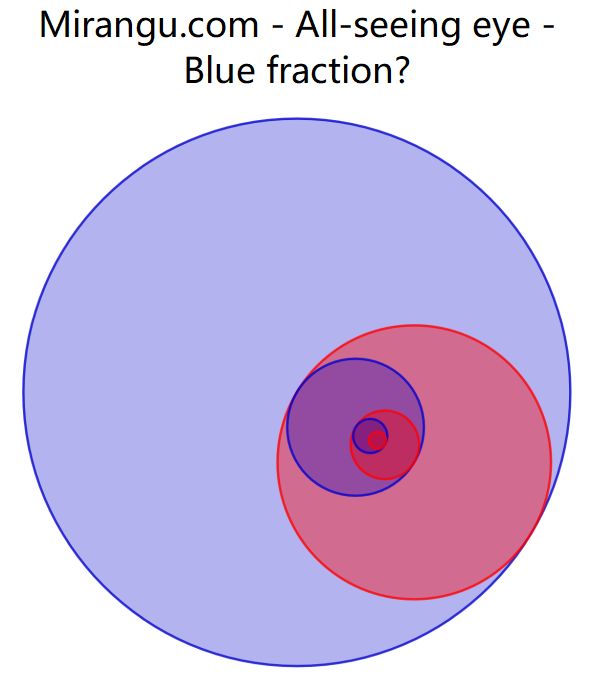
If the radius shrinks by the factor 1/2 for each smaller circle, what fraction of the whole area is represented by all the blue crescents (separated by the red crescents)? Assume the circles keep going inward forever.
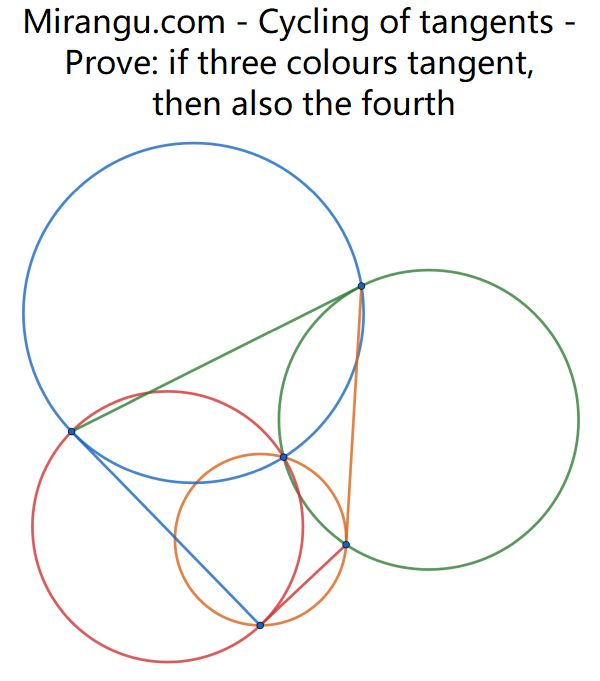
Four circles share one point. The quadrilateral has vertices which are intersections of pairs of circles, and three of its coloured edges are tangent to the circle of the same colour. Show that the fourth edge is also tangent to its circle.
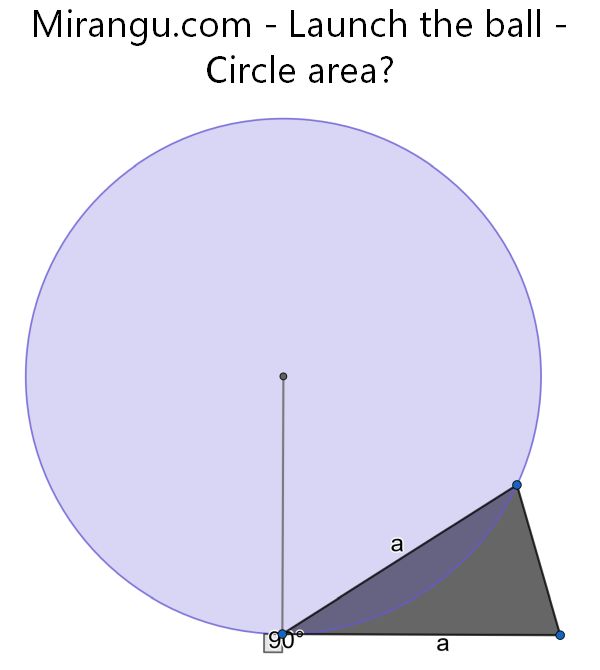
Express the circle area in terms of the isosceles triangle area A and its side length a.
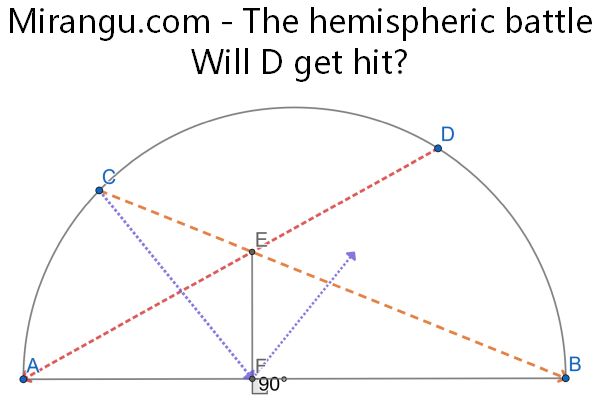
C fires at city B and D fires at city A, but their rockets collide in mid-air and fall into the ground at F. Then C fires a laser bouncing off the ground at F at the same angle as incidence. Will the laser beam hit combatant D?
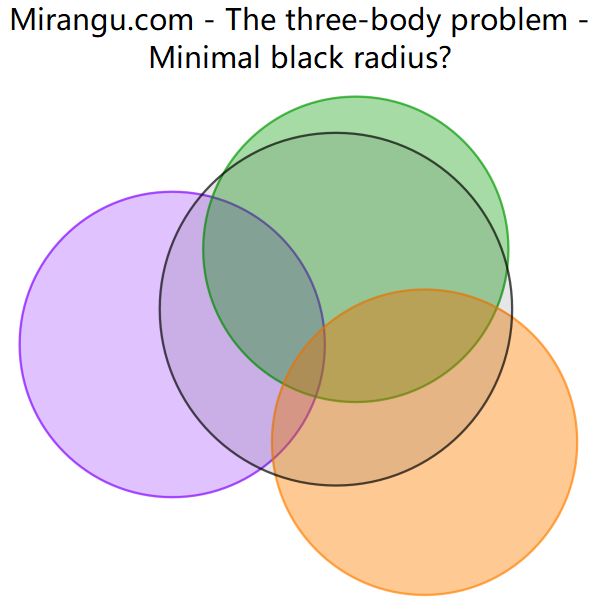
Three coloured unit disks are placed so that they have a common (3-way) intersection, but none of the disks covers the intersection of the other two disks. What is the minimum radius of the disk that would cover all intersections at once, in all cases?